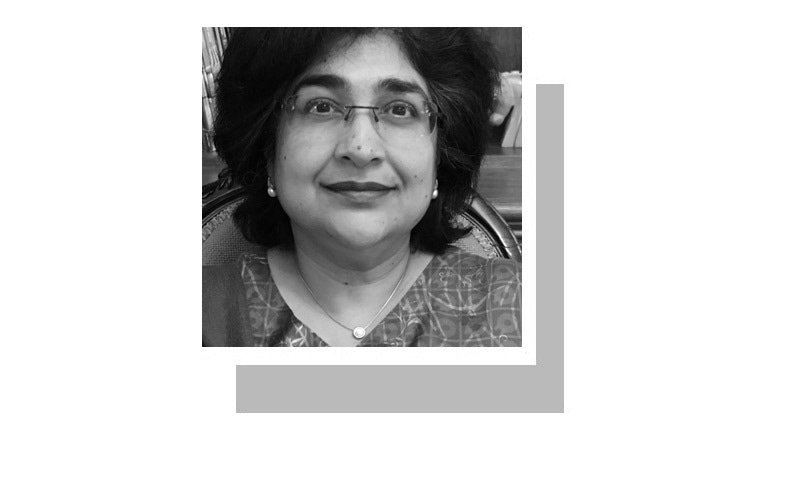
KARACHI’S air is more polluted than Beijing. Think about it. All the clues have been there for many years — my mother-in-law constantly on oxygen or using an inhaler in Karachi, my children using inhalers or taking anti-allergy tablets. But as a scientist, my light bulb moment only happened when I saw a graph in the International Energy Agency (IEA)’s Global Outlook report for 2016, which showed Karachi next to Beijing, but higher on the pollution scale. The IEA’s report was on air pollution because, as the report’s foreword notes, “energy production and use is the most important source of air pollution coming from human activity.” I cannot get that graph out of my head.
The first reaction I received was denial. The obvious question was, “If Karachi is that bad, why don’t we see the smog associated with Beijing?” Sadly, the pollution that affects health is fine particulate matter, under 2.5 microns in size or PM2.5. You cannot see it. These particles are so tiny that they make their way through to the deepest part of our lungs. These are the ones that kill you — literally. The pollution we can see are the bigger particles that typically get caught in our noses before they get much further. The IEA graph used World Health Organisation (WHO) data. This data indicates that the annual mean concentration of PM2.5 in the air in Karachi is 88 micrograms per cubic meter (µg/m3), almost nine times WHO’s recommended level of 10 µg/m3. Even Pakistan’s own ambient standard for PM2.5 puts the cap at 15 µg/m3 (annual average). Other Pakistani cities are not much better. According to WHO, the concentration of PM2.5 in Peshawar and Rawalpindi is over 100 µg/m3, much worse than in Karachi. Lahore and Islamabad are over 60 µg/m3, more than four times the Pakistani national standard.
Poor air quality increases the risk of stroke, heart disease, lung cancer, and both chronic and acute respiratory diseases, including asthma. Air pollution kills about eight million people annually, and is the fourth leading risk factor for premature deaths worldwide, costing the global economy about $225 billion in lost labour income in 2013, according to the World Bank. Even greater is the cost of illness, resulting in health costs and loss of productivity due to days off work. The highest cost is the agony of watching our children or parents suffer from diseases such as asthma and the loss of pride associated with living in a dirty city.
To tackle the pollution in our cities, we need to first acknowledge that we have an air quality problem.
However, many cities and countries have successfully addressed this problem. Mexico City made huge improvements by acting on vehicular pollution and Bogota by improving fuel quality. Others succeeded temporarily until investments were made that locked in a development path that did not take into account future pollution. In China’s case, it is the coal power plants that are a major source of air pollution. Therefore, in 2012, the Chinese government sought to remedy this by tightening emissions standards for their coal power plants ahead of many countries, including the EU. Thus, they were able to respond to their energy needs and protect the health of their citizens.
In order to tackle the pollution in our cities, we need to first acknowledge that we have an air quality problem and begin to share data regularly on air quality and emissions sources with citizens. Indeed, the right to a clean environment is already enshrined in our Constitution and confirmed by the Supreme Court.
Secondly, we need to identify the sources of pollution in each of our major cities using a fairly simple test where air is passed through a filter paper and the pollution sources analysed. These results are validated by comparing them with the outcomes of computer models that take into account emission source inventories and meteorological effects. Past analyses suggest that in the case of Karachi, industrial emissions (including from poor quality fuel oil), vehicular emissions, fossil fuel combustion, burning trash, and dust from construction, street cleaning, agricultural residues, and sea salt are important sources.
Third, we need to address as many of these sources as possible. In fact, it’s not that difficult. Just procuring diesel and fuel/furnace oil with lower sulphur content, reducing industrial emissions through use of cleaner technology, covering our construction sites, or putting in place a better waste management system so the burning of trash is avoided can make a huge difference.
Finally, we need to systematically think about future sources of pollution and put in place frameworks to manage these from now. Take the planned increase in coal power plants as an example. Recognising this as a future source of pollution, the federal environment protection agency could introduce new emissions standards for PM2.5 (which do not even exist currently in Pakistan) for coal power plants and adjust other emissions standards, learning from China. This will help to ensure that clean technology is used right from the start in these coal plants, reducing the risk of new plants worsening our air quality. Putting these standards in early will also help to ensure that investors do not have to face additional costs later for retrofitting these plants or even closing them down altogether.
As a concerned Pakistani, who has helped many other cities and countries address this problem, it really pains me to see the path that we are unwittingly following on air quality. We need to wake up. We should be defining our own future, a future where each Pakistani not only has the right to breathe clean air, but can actually do so. We can neither tolerate nor afford anything less, if nothing else for our children and our parents’ sake.
The writer was practice manager for the Environment and Natural Resources Global Practice and the senior-most Pakistani at the World Bank when she retired in October 2016.
Published in Dawn, February 20th, 2017










































